After visiting Saint Rémy this morning, we drove through more of the pretty countryside of Provence as we headed for the medieval stone village of Les Baux-de-Provence.
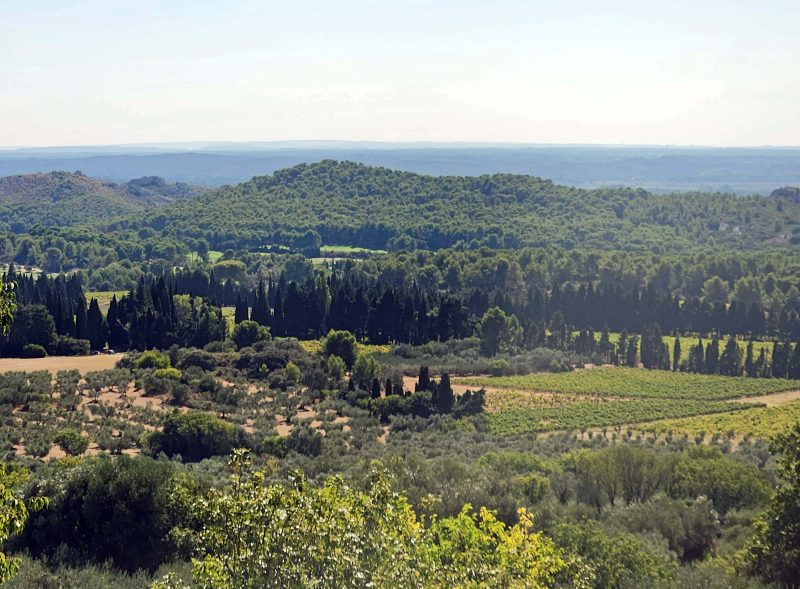
The limestone in the Alpilles mountain range has been (and continues to be) shaped by the Mistral winds. The Alpilles are not very high mountains—the altitude of the highest peak in the range is 1,634 feet.
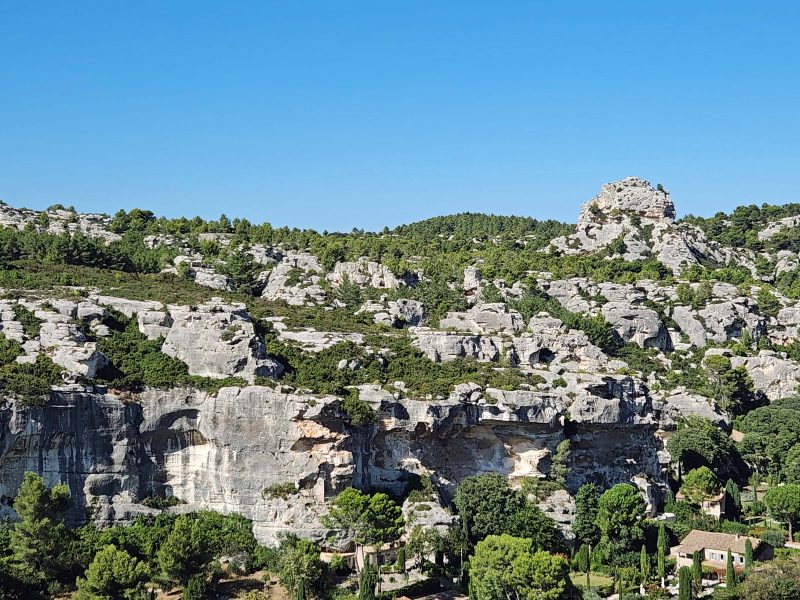
Before arriving in Les Baux, we stopped for lunch at a wonderful nearby restaurant set on the mountainside. The limestone mountain in the background is part of the Alpilles.
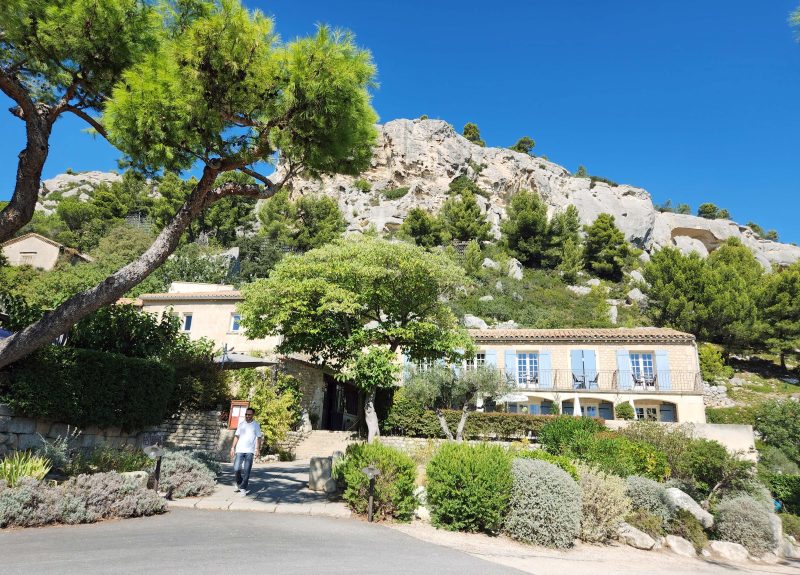
This was our view from the restaurant. Our group of about a dozen people dined al fresco at a shaded table on the patio. You can see a corner of the patio in the lower right of the picture. The meal was so-o-o-o good. The host and servers were very friendly, and we all had a good time.
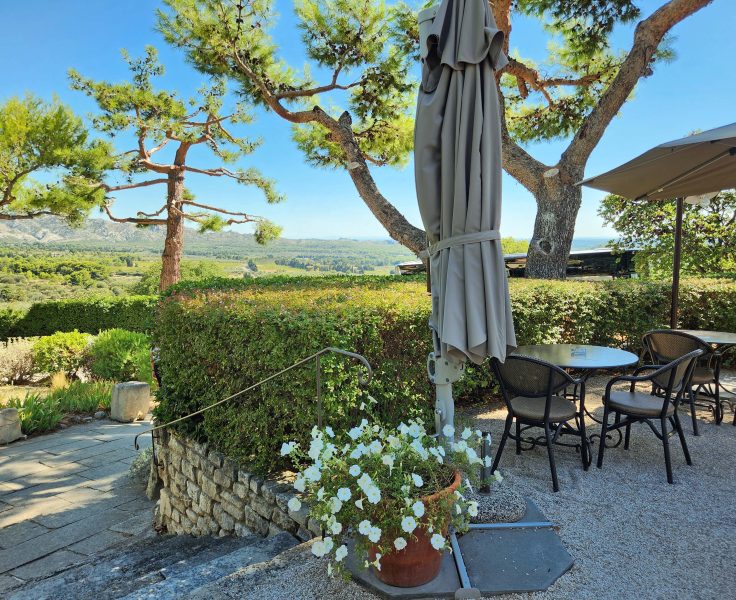
After our leisurely lunch, it was time to visit the stone village of Les-Baux-de-Provence.
Because of its position on an escarpment, the fortress of Les Baux protected the mountain valley and the village’s food supply. The natural ridge on which it was built allowed the village to control all approaches to the citadel, including passage up and down the Rhône River, as well as access from the Mediterranean Sea. As a result of its geography, the fortress of Les Baux was impregnable to the military technology of the time.
The House of Baux was one of the richest and most powerful families of medieval Provence, and is still thriving today in Naples. The family used its name for the fortress on which they built their castle and for the stone village surrounding it. The French word baux means “cliffs” or “escarpments” and is well-suited to this area.
The Old Fortress is in the upper center of this photo, and you can see that it sits in a great defensive position.
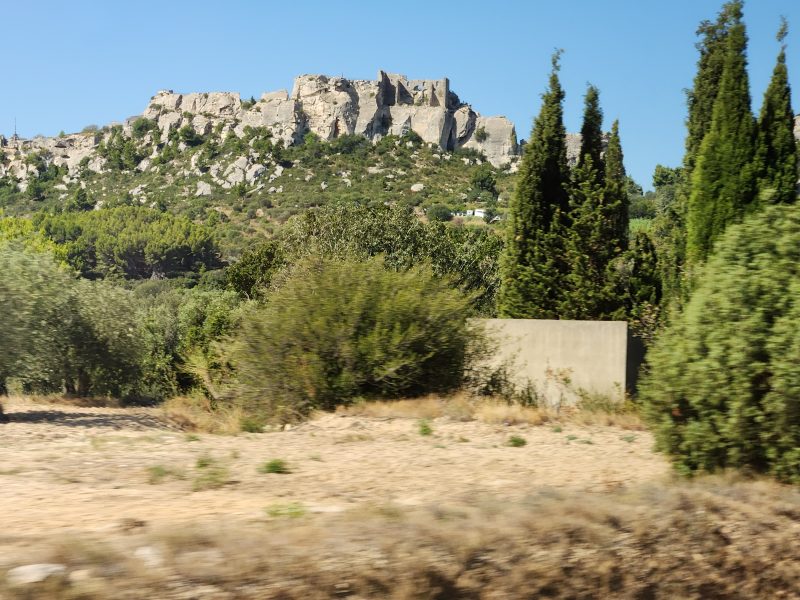
This house was one of the first buildings we passed on our way from the parking lot uphill to the fortress. Our guide told us this is less than half of the house; the other half is cut into the rock behind it.
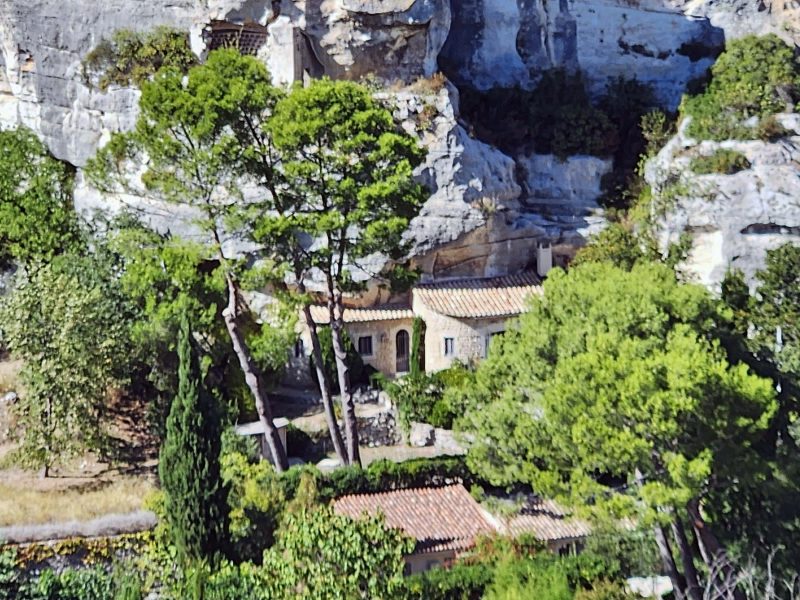
The left half of this photo shows the Church of St. Vincent, and so does the right half. The left half is an extension of the original church; the original church is built into the rock on the right side of the photo.

Here’s the main altar of the church. Much of this area is located within the rock shown in the photo above. When the morning sun shines on the eastward-facing stained-glass windows, it sends colored light into the nave.
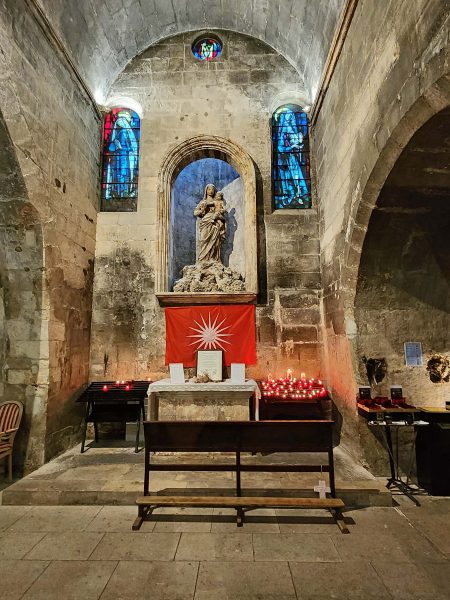
This carved niche of St. Vincent’s Church is cut out of the mountain rock. At Christmas, it is used to stage the Nativity. A lamb is placed in the small cart and brought by the “shepherd” to Baby Jesus. Merino sheep are raised in this region of France, so sheep are very important to the economy here.

In addition to carving the visible mountain rocks, the Mistral winds have shaped small caves like this, as well as larger ones, in the mountains. La citerne means “the cistern”—a tank for storing water, especially for flushing toilets. Maybe the restrooms were near this little cave. (Hopefully, not in it.)
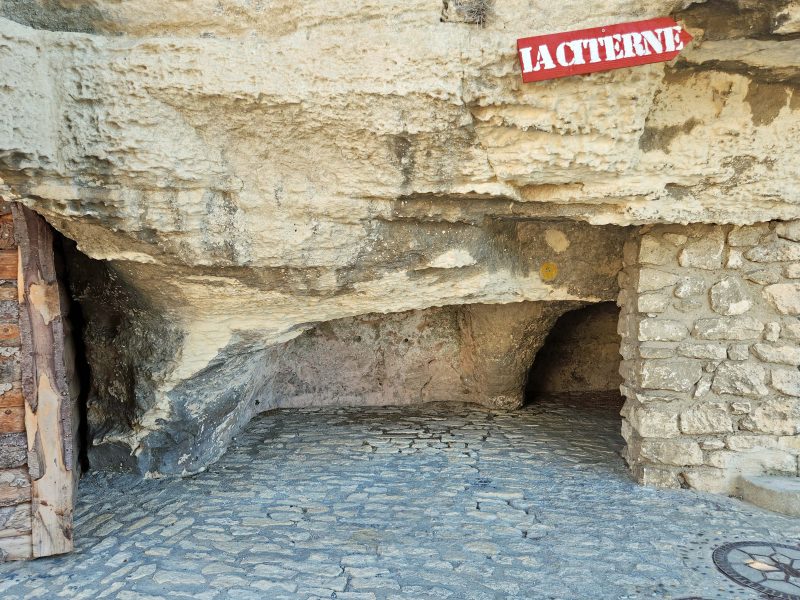
At its peak, Les Baux had about 6,000 residents; today, fewer than 300 people live there. It is much noisier and busier today than it was in Medieval times, however, because more than 1.5 million tourists visit it each year. That explains the large number of shops in the village.
Here are some scenes from the stone village of Les Baux.

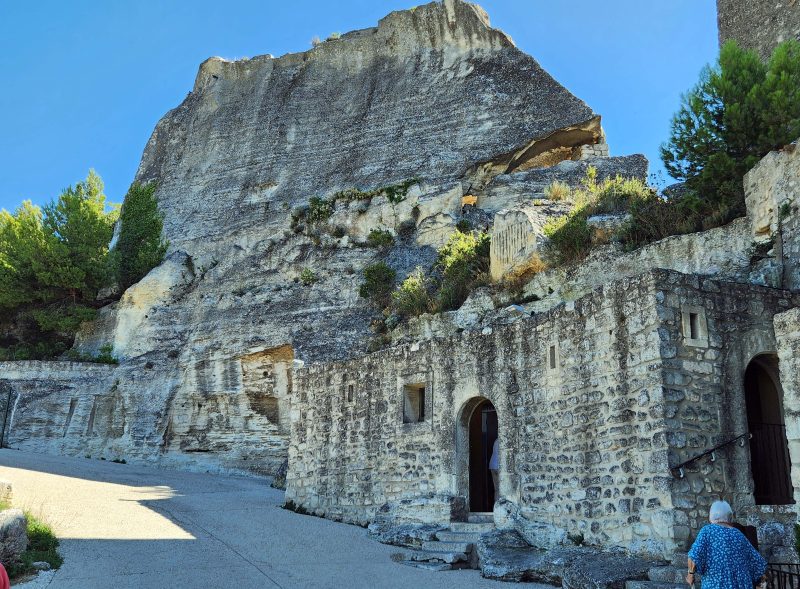
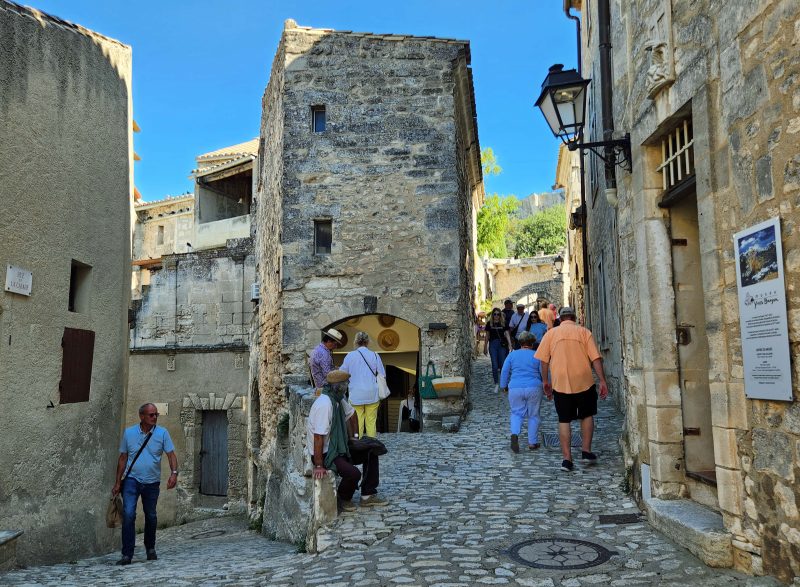

This is a café, but it didn’t qualify for my “tiny cafés” post because the single umbrella provides shade in the reception area while waiting for the hostess to seat you. The café itself is beyond the arched doorway in the left center of the photo and has a beautiful view overlooking a valley.
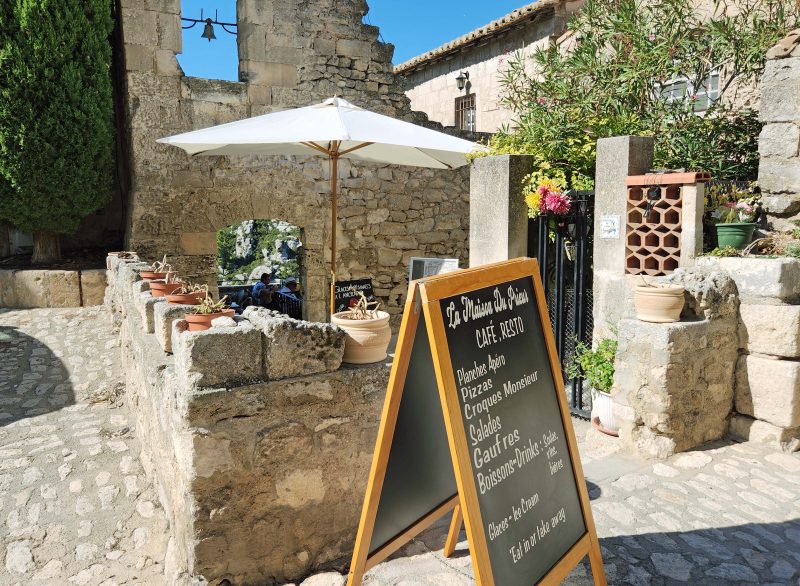
It was a lovely day to be outdoors, and it was interesting to walk around Les Baux. It’s the only place I’ve ever been where all the buildings, streets, and scenery are made of rock—with the exception of a few bits of decorative greenery.